The Battle of Plains Store was fought on May 21, 1863, in East Baton Rouge Parish, Louisiana, during the campaign to capture Port Hudson in the American Civil War. Union troops advancing from Baton Rouge, Louisiana, clashed with 600 Confederates at a road junction. The initial Confederate force withdrew, but 400 more Confederates arrived from Port Hudson. Some of the Confederate reinforcement overran Union artillery and routed a Union regiment, but were unable to capture the guns. Union reinforcements advanced to the front, attacked part of the Confederate force and drove them from the field. The Confederates withdrew to Port Hudson, which was almost entirely surrounded by Union troops the next day. Port Hudson was under siege until the defenders surrendered on July 9.
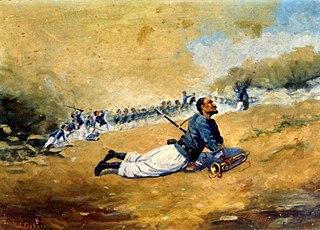
Louisiana Tigers was the common nickname for certain infantry troops from Louisiana in the Confederate army during the American Civil War. Originally applied to a specific company, the nickname expanded to a battalion, then to a brigade, and eventually to all Louisiana troops within the Army of Northern Virginia. Although the exact composition of the Louisiana Tigers changed as the war progressed, they developed a reputation as fearless, hard-fighting shock troops.
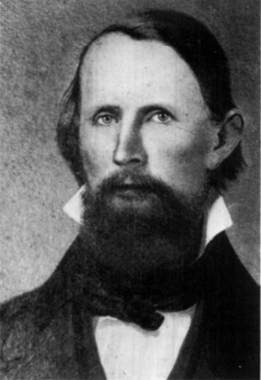
Benjamin Lewis Hodge was a Confederate politician who commanded the 19th Louisiana Infantry Regiment during the early stages of the American Civil War, including during the Battle of Shiloh.

The 9th Louisiana Infantry Regiment or Louisiana Tigers was the common nickname for certain infantry troops from the state of Louisiana in the Confederate States Army during the American Civil War. Originally applied to a specific company, the nickname expanded to a battalion, then to a brigade, and eventually to all Louisiana troops within the Army of Northern Virginia. Although the exact composition of the Louisiana Tigers changed as the war progressed, they developed a reputation as fearless, hard-fighting shock troops.
The following list is a bibliography of American Civil War Confederate military unit histories and are generally available through inter-library loan. More details on each book are available at WorldCat. For an overall national view, see Bibliography of the American Civil War. For histories of the Union, see Bibliography of American Civil War Union military unit histories. For a guide to web sources see: Carter, Alice E.; Jensen, Richard. The Civil War on the Web: A Guide to the Very Best Sites—Completely Revised and Updated (2003).

Miles' Legion was a unit of the Confederate Army during the American Civil War. It was commanded by Colonel William R. Miles. The unit was officially named the 32nd Louisiana Infantry Regiment but it was never referred to by that name. The legion fought at the Battle of Plains Store and the Siege of Port Hudson. Captured at Port Hudson, the men were paroled, and the legion was declared exchanged in fall 1863. Many of the exchanged men never returned to duty. Those who did return joined Gober's Mounted Infantry Regiment or the 15th Louisiana Sharpshooter Battalion.
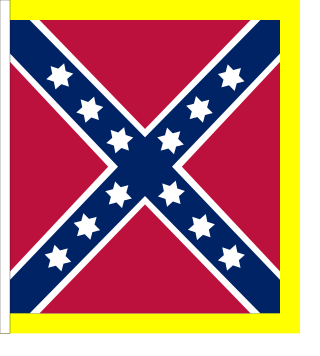
The 1st Louisiana Regulars Infantry Regiment, often referred to as the 1st Louisiana Infantry Regiment (Regulars), was an infantry regiment from Louisiana that served in the Confederate States Army during the American Civil War.

The 21st Louisiana Infantry Regiment, also called the McCown Regiment, was an infantry regiment from Louisiana that served in the Confederate States Army during the American Civil War. Six of its companies formed the 5th Louisiana Infantry Battalion organized in September 1861, which fought in the Battle of Belmont as cannoneers. The battalion was brought up to regimental strength, becoming the 21st Louisiana, by the addition of four companies in February 1862. After service at Island Number Ten, Fort Pillow, and the Siege of Corinth, the regiment was disbanded due to its high desertion rate.

The 6th Louisiana Infantry Regiment served in the Confederate States Army during the American Civil War. It was part of the Louisiana Tigers. Formed in June 1861 at Camp Moore, it fought in Jackson's Valley campaign, the Battle of Gaines Mill, the Second Battle of Bull Run and its related actions, and the Battle of Antietam in 1862. The next year, it fought at the Second Battle of Fredericksburg, the Battle of Salem Church, the Second Battle of Winchester, and the Battle of Gettysburg before being overrun at the Second Battle of Rappahannock Station. It spent 1864 fighting in Grant's Overland campaign and with Jubal Early in the Valley campaigns of 1864. The regiment fought in the Battle of Hatcher's Run and the Battle of Fort Stedman in early 1865 before surrendering after the Battle of Appomattox Court House in April. It began its service with 916 men and ended with 52.
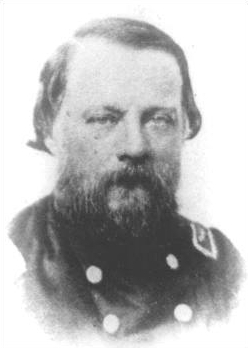
The 1st Louisiana Infantry Regiment was a unit of volunteers recruited in Louisiana that fought in the Confederate States Army during the American Civil War. Formed in April 1861, the regiment was sent to fight in the Eastern Theater of the American Civil War. Joining a brigade of Louisiana regiments, it fought at Malvern Hill, Second Bull Run, Antietam, and Fredericksburg in 1862, at Chancellorsville, Second Winchester, Gettysburg, and Mine Run in 1863, and at the Wilderness, Spotsylvania, Monocacy, Third Winchester, Fisher's Hill, Cedar Creek, and Petersburg in 1864, and at Appomattox in 1865. At Appomattox, the regiment was only a shadow of its former self.
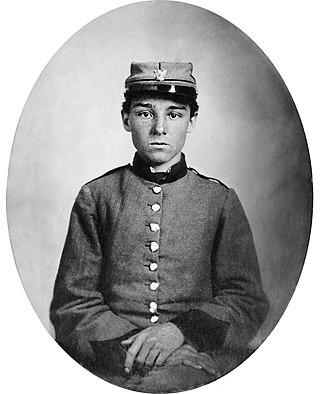
The 2nd Louisiana Infantry Regiment was a unit of volunteers recruited in Louisiana that fought in the Confederate States Army during the American Civil War. Formed in May 1861, the regiment was sent to fight in the Eastern Theater of the American Civil War. Its first action took place during the Siege of Yorktown. The regiment suffered very heavy losses at Malvern Hill. After joining an all-Louisiana brigade, it fought at Cedar Mountain, Second Bull Run, Antietam, and Fredericksburg in 1862, at Chancellorsville, Second Winchester, Gettysburg, and Mine Run in 1863, and at the Wilderness, Spotsylvania, Cold Harbor, Monocacy, Third Winchester, Fisher's Hill, Cedar Creek, and Petersburg in 1864, and at Appomattox in 1865. The regiment lost over 100 men at both Second Bull Run and Chancellorsville. A company-sized remnant surrendered at Appomattox.

The Louisiana Guard Battery was an artillery unit recruited from volunteers in Louisiana that fought in the Confederate States Army during the American Civil War. Formed from an infantry company sent to fight in the Eastern Theater of the American Civil War, it was converted to an artillery company in July 1861. The battery fought at Cedar Mountain, Second Bull Run, Antietam, and Fredericksburg in 1862, and at Chancellorsville, Second Winchester, and Gettysburg in 1863. Most of the soldiers and all of the battery's guns were captured at Rappahannock Station on 7 November 1863. The surviving gunners manned heavy artillery pieces in the defenses of Richmond, Virginia, and the battery's remnant surrendered at Appomattox.

The 8th Louisiana Infantry Regiment was a unit of volunteers recruited in Louisiana that fought in the Confederate States Army during the American Civil War. Formed in June 1861, the regiment was sent to fight in the Eastern Theater of the American Civil War. Joining a brigade of Louisiana regiments, it fought in Jackson's Valley campaign and at Gaines' Mill, Malvern Hill, Second Bull Run, Antietam, and Fredericksburg in 1862. The regiment served at Chancellorsville, Second Winchester, Gettysburg in 1863. At Rappahannock Station in November 1863, most of the regiment was captured. The unit fought at the Wilderness, Spotsylvania, Cold Harbor, and the Valley campaigns of 1864. It served at Petersburg starting in December 1864 and surrendered at Appomattox in April 1865.

The 4th Louisiana Infantry Regiment was a unit of volunteers recruited in Louisiana that fought in the Confederate States Army during the American Civil War. Formed in May 1861, the regiment served in the Western Theater of the American Civil War. The unit fought at Shiloh and Baton Rouge in 1862 and at Jackson in 1863. A detachment served during the Siege of Port Hudson and was captured. In 1864, the regiment fought in the Atlanta campaign where it lost heavily at Jonesborough. At Nashville in December 1864 most of the men were captured. The survivors were consolidated with several other units and fought at Spanish Fort in April 1865. The remnant surrendered in May 1865.

The Donaldsonville Louisiana Artillery was a Louisiana artillery unit that fought in the Confederate States Army during the American Civil War. Formed from an old militia company, it arrived in the Eastern Theater of the American Civil War in September 1861 with three obsolete guns and was equipped with three additional rifled guns. The battery fought at Yorktown, Williamsburg, Seven Pines, Gaines' Mill, Glendale, Second Bull Run, Antietam, Shepherdstown and Fredericksburg in 1862. The following year the unit served at Gettysburg and in the Bristoe and Mine Run campaigns. The battery fought in the Overland campaign and at the Siege of Petersburg in 1864. It surrendered at Appomattox in April 1865.

The 7th Louisiana Infantry Regiment was a unit of volunteers recruited in Louisiana that fought in the Confederate States Army during the American Civil War. Formed in June 1861, the regiment was sent to fight in the Eastern Theater of the American Civil War. After fighting at First Bull Run, the unit joined the 1st Louisiana Brigade. The regiment served in Jackson's Valley campaign and at Gaines' Mill, Malvern Hill, Cedar Mountain, Second Bull Run, Harpers Ferry, Antietam, and Fredericksburg in 1862. The regiment fought at Chancellorsville, Second Winchester, and Gettysburg in 1863. At Rappahannock Station in November 1863, almost the entire regiment was captured. The remnant of the unit fought at the Wilderness, Spotsylvania, Cold Harbor, and the Valley campaigns of 1864. It served at Petersburg starting in December 1864 and surrendered at Appomattox in April 1865.
The 5th Louisiana Infantry Regiment was a unit of volunteers recruited in Louisiana that fought in the Confederate States Army during the American Civil War. Formed in June 1861, the regiment was sent to fight in the Eastern Theater of the American Civil War. The regiment served at Yorktown, White Oak Swamp, Cedar Mountain, Second Bull Run, Harpers Ferry, Antietam, and Fredericksburg in 1862. The regiment fought at Chancellorsville, Second Winchester, and Gettysburg in 1863. At Rappahannock Station in November 1863, virtually the whole regiment was captured. The unit's remnant fought at the Wilderness, Spotsylvania, Cold Harbor, and the Valley campaigns of 1864. It served at Petersburg starting in December 1864 and a mere handful surrendered at Appomattox in April 1865.

The 14th Louisiana Infantry Regiment was a unit of volunteers recruited in Louisiana that fought in the Confederate States Army during the American Civil War. Formed in June 1861 as the 1st Regiment, Polish Brigade, the unit was later accepted into Confederate service as the 13th Regiment. After being sent to fight in the Eastern Theater of the American Civil War, it was renamed the 14th Regiment. In 1862, it fought at Yorktown, Williamsburg, Seven Pines, Beaver Dam Creek, Gaines' Mill and Glendale. At Glendale, the unit suffered a severe number of casualties and, thereafter, surviving members of the regiment dubbed the battle "the Slaughterhouse."

The 15th Louisiana Infantry Regiment was a unit of volunteers recruited in Louisiana that fought in the Confederate States Army during the American Civil War. Formed in June 1861 as the 2nd Regiment, Polish Brigade, the unit was sent to fight in the Eastern Theater of the American Civil War. As the 3rd Louisiana Infantry Battalion, the unit served at Beaver Dam Creek and Glendale. After two companies from the 7th Louisiana Infantry Battalion were added in July 1862, the unit reorganized as the 15th Louisiana Infantry Regiment. It joined the 2nd Louisiana Brigade and fought at Cedar Mountain, Second Bull Run, Antietam, and Fredericksburg in 1862. It served at Chancellorsville, Second Winchester, Gettysburg, and Mine Run in 1863. The regiment fought at the Wilderness, Spotsylvania, Cold Harbor, Monocacy, Third Winchester, Fisher's Hill, Cedar Creek, and Petersburg in 1864. A handful of survivors surrendered at Appomattox in 1865.

The 30th Louisiana Infantry Regiment was a unit of volunteers recruited in Louisiana that fought in the Confederate States Army during the American Civil War. On 17 December 1861, the Sumter Regiment was accepted into state service at New Orleans. On 1 March 1862, the militia regiment transferred to Confederate service for a 90-day enlistment. At the Capture of New Orleans on 25 April, three and a half companies stayed in the city and were captured. The other companies went to Camp Moore where the regiment reorganized for Confederate service on 15 May 1862, by the addition of four more companies. Company K left on furlough and never returned. The regiment fought at Baton Rouge before being assigned to garrison Port Hudson. On 4 March 1863, two companies were suppressed and their men reassigned to other companies, officially reducing the regiment to a 7-company unit named the 30th Louisiana Infantry Battalion. However, contemporary records often continued to refer to the unit as a regiment. A detachment was captured at the Siege of Port Hudson, but the bulk of the battalion served at Jackson in 1863, and New Hope Church, Atlanta, Ezra Church, and Nashville in 1864. The survivors were consolidated with the remnants of the 4th and 13th Louisiana Infantry Regiments, and the 14th Louisiana Battalion in February 1864. The men fought at Spanish Fort in March and April 1865, and surrendered in May 1865.

















